Island Peak, also known as Imja Tse, is a popular trekking peak located in the Everest region of Nepal. Climbing up on a 50–70-degree angle and standing at an elevation of 6,189 meters (20,305 feet). This offers a thrilling adventure for trekkers and climbers seeking to experience the majesty of the Himalayas.
However, like any high-altitude adventure, the Island Peak trek comes with inherent risks. In recent years, there have been unfortunate incidents of deaths during this trek, highlighting the need for a deeper understanding of the risks involved and the measures that can be taken to enhance safety.
Understanding the Risks
Physical fitness and experience
Island Peak is technically demanding, requiring basic mountaineering skills such as using crampons, ice axes, and fixed ropes. Your physical fitness and climbing knowledge are probably the most important topics Lack of physical fitness and inadequate climbing experience can increase the likelihood of accidents and fatalities.
Avalanches and landslides
The rugged terrain and changing weather conditions make the region prone to avalanches and landslides, particularly in the spring season when melting snow increases the risk.

Trekkers need to be aware of potential hazards and exercise caution in vulnerable areas.
Altitude-related illnesses
As trekkers ascend to higher altitudes, they expose themselves to the risk of altitude sickness. Acute Mountain Sickness (AMS), High-Altitude Pulmonary Edema (HAPE), and High-Altitude Cerebral Edema (HACE) are some altitude-related illnesses that can be life-threatening if not properly addressed. Symptoms include headaches, nausea, dizziness, and fatigue.
Weather conditions
The weather in the Everest region can be unpredictable and harsh. Sudden storms, heavy snowfall, and freezing temperatures can pose significant challenges and increase the risk of accidents, especially in exposed areas such as high passes.
Also Read: Everything you need to know about Island Peak Permit
Enhancing Safety Measures
Pre-trip preparations
Prior to embarking on the Island Peak trek, it is crucial to undergo a comprehensive medical examination to assess physical fitness and determine any pre-existing conditions that may pose risks at high altitudes.
Adequate physical conditioning, including cardiovascular training and strength exercises, can help prepare the body for the demands of the trek.
Acclimatization
Proper acclimatization is essential to minimize the risk of altitude-related illnesses. Trekking itineraries should include gradual ascents with scheduled rest days to allow the body to adapt to the decreasing oxygen levels. Trekkers should monitor their own and their companions’ health closely and be prepared to descend if symptoms of altitude sickness persist or worsen.
Experienced guides and support staff
Engaging an experienced guide who is familiar with the terrain and weather conditions of the region is crucial.
You may also like: 11 Mind-Blowing Facts about Everest Base Camp
They can provide valuable insights, offer guidance on route selection, and ensure adherence to safety protocols. A knowledgeable support staff that includes porters and Sherpas can assist in carrying equipment and supplies, allowing trekkers to focus on their well-being.
Weather monitoring and contingency plans
The weather in the Everest region is highly unpredictable and can change rapidly. Climbers must be prepared to face harsh weather conditions, including sudden storms, strong winds, heavy snowfall, and extremely low temperatures. Inclement weather can hinder progress, reduce visibility, and increase the risk of frostbite and hypothermia.

Regular monitoring of weather forecasts is essential to anticipate any adverse conditions. Trekking groups should have contingency plans in place, allowing for flexible itinerary adjustments or even retreat if the weather deteriorates significantly. It is important to prioritize safety over summiting.
Equipment and safety gear
Proper equipment is vital for a safe trek. Trekkers must invest in quality gear, including appropriate clothing for extreme temperatures, sturdy boots, and harnesses. Carrying essential safety equipment like first aid kits, satellite phones, and emergency oxygen can prove invaluable in critical situations.
Island Peak Death Rate
Overall, the island peak climb is considered a safe and easy climb. Every year many mountaineers succeed to reach the summit of this mountain. Basic mountaineering skills and knowledge are needed for the climb. It is physically demanding and therefore it is necessary to train your body for this climb.

The most difficult part is the base of the headwall. With air at its thinnest the ascent can be difficult, however, to secure safety there are fixed lines. While mountaineering everyone is responsible for their own safety. To ensure this it is important you are physically trained for a climb like this. That means working out 5 days a week for 6 months before the trekking.
Obstacles
It is important to have enough knowledge about climbing and have an understanding of Himalayan climbing. Some things you should be able to do are:
- Climbing on glaciers roped to others
- Cross crevasses
- Use ladders
- Climbing a fixed rope
Technical Difficulty
Island Peak is classified as a “trekking peak,” but it still requires technical climbing skills. The ascent involves sections of steep snow and ice slopes, rocky terrain, and the use of crampons, ice axes, and ropes. Climbers need to be proficient in basic mountaineering techniques and comfortable with using the necessary equipment.
More: Everest Base Camp Difficulty: Is Everest Base Camp dangerous?
Prior experience in high-altitude trekking and some level of technical training are recommended to navigate these challenging sections safely. Enrolling in a mountaineering course or hiring an experienced guide can help climbers overcome the technical difficulties of Island Peak.
Logistics and Infrastructure
The logistical aspects of climbing Island Peak can present obstacles as well. Obtaining the required permits, organizing transportation, and arranging for guides, porters, and equipment can be complex and time-consuming. The availability of reliable infrastructure, such as lodges and teahouses along the trail, can vary, especially in remote sections.
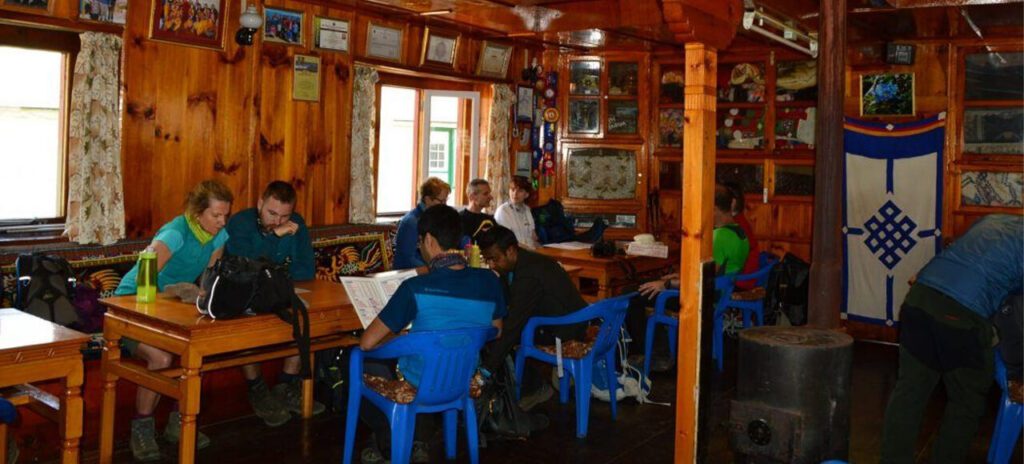
Proper planning, thorough research, and working with reputable trekking agencies can help climbers overcome these logistical challenges and ensure a smoother expedition.
Highlights of island peak
Island Peak, also known as Imja Tse, is a captivating trekking peak located in the Everest region of Nepal. Standing tall at an elevation of 6,189 meters (20,305 feet), this majestic peak offers a remarkable climbing experience amidst the breathtaking Himalayan landscapes.

From awe-inspiring vistas to the sense of accomplishment upon reaching the summit, Island Peak has several highlights that attract adventure seekers from around the world. In this article, we will explore the captivating highlights that make climbing Island Peak an unforgettable endeavor.
Spectacular Panoramic Views
One of the most remarkable highlights of climbing Island Peak is the unparalleled panoramic views it offers. As climbers ascend to higher altitudes, they are treated to breathtaking vistas of the surrounding Himalayan peaks, including the iconic Mt. Everest, Lhotse, Nuptse, and Ama Dablam.
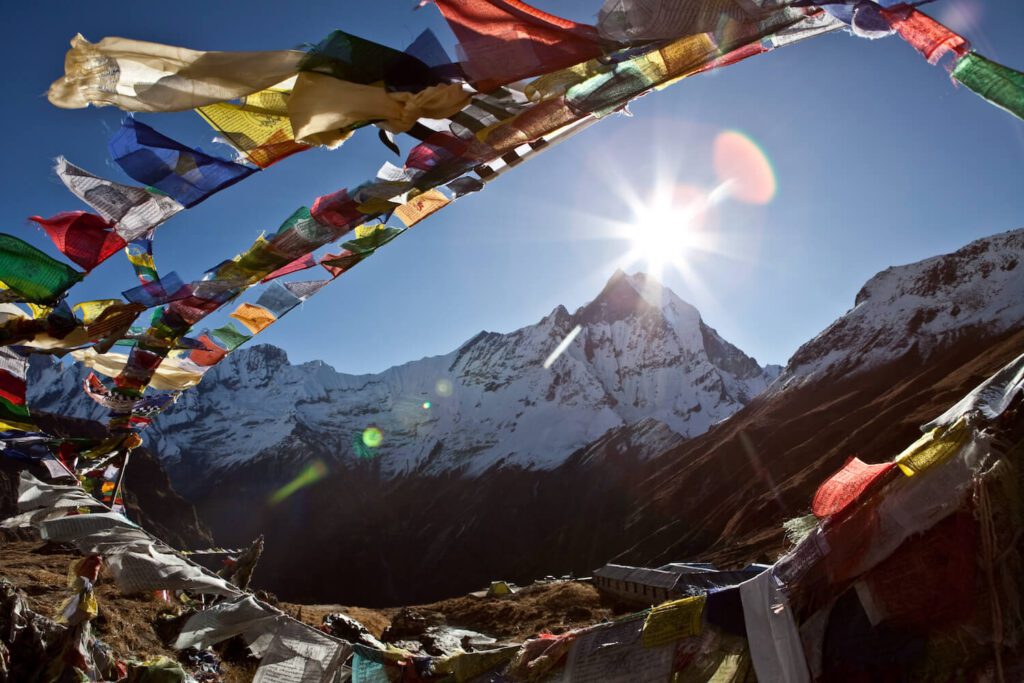
The vast expanse of snow-capped mountains, deep valleys, and glacial lakes creates a stunning visual spectacle that leaves climbers in awe. The sunrise and sunset views from Island Peak’s summit are particularly mesmerizing, casting a golden glow over the entire Himalayan range.
Immersion in Sherpa Culture
The Island Peak trek provides an opportunity to immerse oneself in the rich Sherpa culture and traditions. The trekking route passes through picturesque Sherpa villages like Namche Bazaar, Pangboche, and Dingboche, where trekkers can interact with the local Sherpa community.
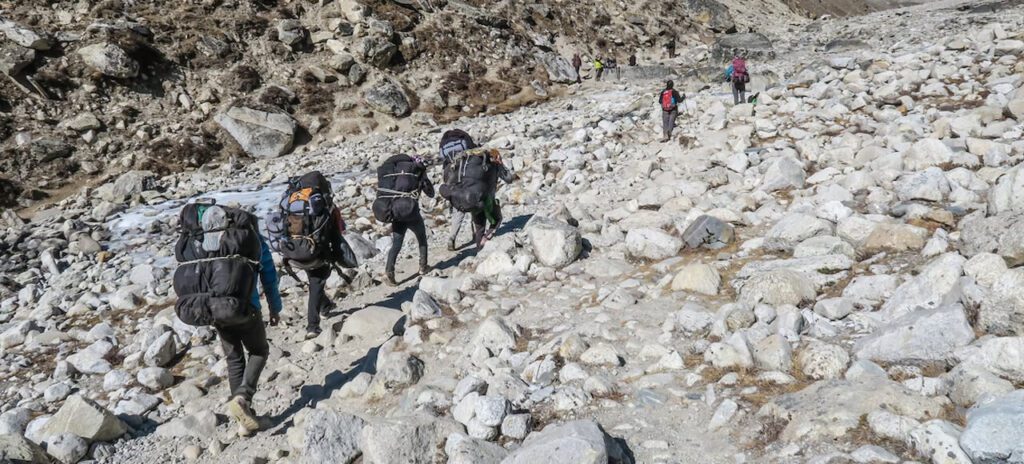
Sherpas are renowned for their mountaineering expertise and warm hospitality. Sharing a cup of tea in a traditional teahouse, witnessing their religious ceremonies, and learning about their way of life adds a cultural dimension to the climbing experience, making it truly enriching.
Adventurous Trekking Journey
The Island Peak trek is not just about summiting a peak; it is an adventure in itself. The journey takes trekkers through diverse landscapes, including lush forests, alpine meadows, and glacial moraines. Crossing high suspension bridges, traversing challenging trails, and conquering high passes like Kongma La and Cho La adds excitement and a sense of achievement.
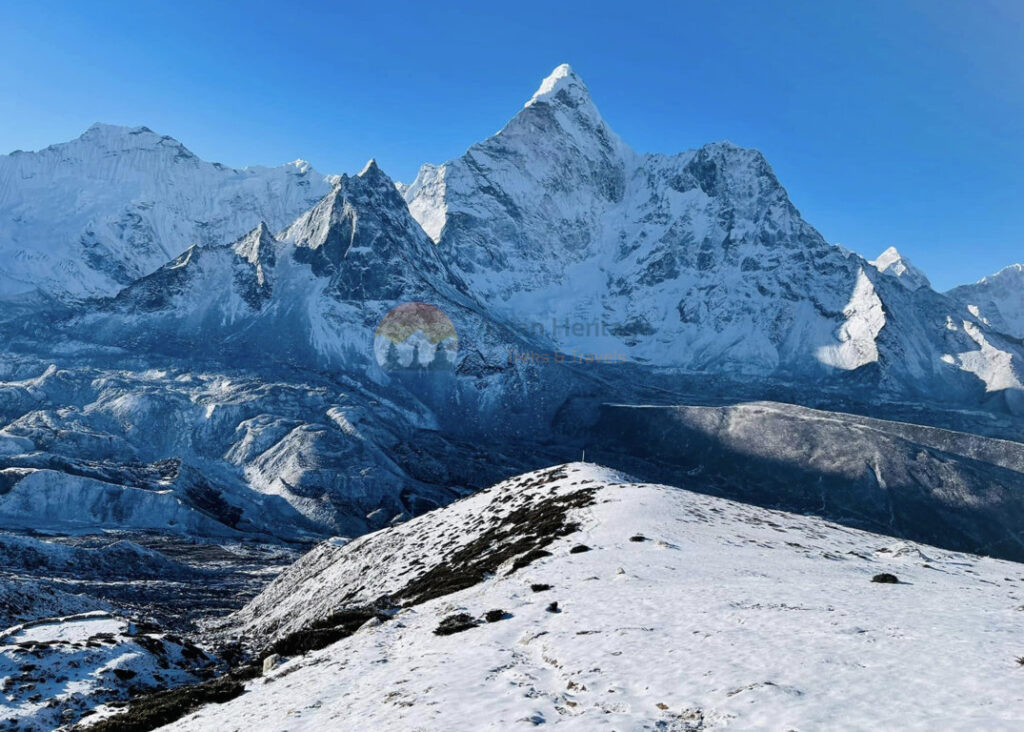
The ever-changing scenery, from verdant valleys to icy wilderness, keeps trekkers captivated throughout the expedition.
Technical Climbing Challenge
Island Peak presents a moderate technical climbing challenge, which adds an element of thrill and accomplishment for mountaineers. The ascent includes sections of steep snow and ice slopes, rock scrambling, and the use of mountaineering equipment such as crampons, ice axes, and ropes.
Read About: Everest Base Camp Challenges: A Troubleshooting Guide
The climb to the summit demands focus, physical agility, and application of climbing skills. Reaching the summit of Island Peak provides climbers with a profound sense of accomplishment and the opportunity to test their mountaineering abilities.
Personal Growth and Self-Discovery
Climbing Island Peak is not merely a physical endeavor; it is a journey of personal growth and self-discovery. The challenges faced during the expedition, both physical and mental, push climbers beyond their limits and help them discover their inner strength and resilience.
The experience fosters self-confidence, determination, and the ability to overcome obstacles. The memories and lessons gained from climbing Island Peak often leave a lasting impact, inspiring climbers to embark on further adventures and pursue personal goals.

Climbing Island Peak offers a myriad of highlights that make it an extraordinary adventure. From the breathtaking panoramic views of the Himalayas to the immersion in Sherpa culture, the journey encompasses both natural and cultural marvels.
The technical climbing challenge, coupled with the personal growth and self-discovery experienced along the way, make ascending Island Peak a truly transformative experience. By embracing these highlights, climbers embark on a remarkable journey that combines adventure, natural beauty, cultural exploration, and personal achievement.
Island peak costs
Embarking on the challenging and awe-inspiring journey to climb Island Peak in the Everest region of Nepal requires careful financial planning. While the costs associated with climbing Island Peak can vary depending on several factors, including the trekking agency, duration of the expedition, and personal preferences, it is essential to have a clear understanding of the potential expenses involved.
In this article, we will explore the key cost factors associated with climbing Island Peak to help you budget effectively for this remarkable adventure.
Trekking Agency Fees
Engaging a reputable trekking agency is highly recommended for a safe and well-organized Island Peak expedition. The agency will provide experienced guides, porters, necessary permits, logistics, and other essential services.
Read: What makes Nepal different than other countries
The cost of trekking agency fees can vary depending on the level of support and services provided. It is important to research and compares different agencies to ensure they meet your requirements and provide good value for money.
Permit Fees
To climb Island Peak, trekkers are required to obtain permits from the Nepal government. The climbing permit, known as the Island Peak permit, incurs a cost, which varies depending on the season and nationality of the climber.

Additionally, trekkers also need to acquire the Sagarmatha National Park Entry Permit, as Island Peak is located within the park’s boundaries. It is essential to check the latest permit fees and regulations to budget accordingly.
Guide and Porter Fees
Hiring an experienced guide is highly recommended for a safe and successful Island Peak expedition. Guides provide valuable assistance, navigate the route, offer mountaineering advice, and ensure the well-being of climbers. The cost of hiring a guide varies depending on their experience and expertise.
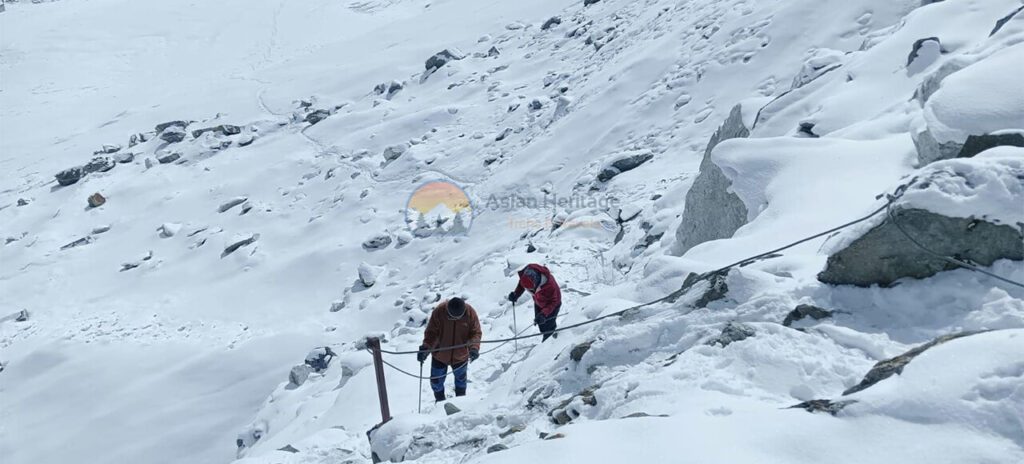
Similarly, if you choose to hire a porter to carry your equipment and supplies, an additional fee will be incurred. It is customary to include their accommodation, meals, and insurance costs.
Equipment Rental
Climbing Island Peak requires specialized mountaineering equipment, including crampons, ice axes, harnesses, helmets, and ropes. If you do not have your own equipment, you can rent it from the trekking agency or local shops in Kathmandu or Namche Bazaar.
The rental fees will depend on the duration of the expedition and the quality of the equipment. It is important to ensure that the rented equipment is in good condition and meets safety standards.
Accommodation and Meals
During the trek to Island Peak, trekkers typically stay in teahouses or lodges along the route. The cost of accommodation varies depending on the location and level of comfort. While basic teahouses provide essential amenities, higher-end lodges offer more comfort and services at a higher cost.

Similarly, meals and drinks along the trail incur additional expenses. It is advisable to budget for three meals a day and carry some extra money for snacks and beverages.
Travel Expenses
Getting to the Everest region typically involves a flight from Kathmandu to Lukla, the gateway to the trekking trails. The cost of a round-trip flight to Lukla can vary depending on the season, airline, and availability. It is recommended to book flights in advance, especially during peak trekking seasons, to secure a seat and potentially obtain better rates.

Miscellaneous Expenses: There may be additional expenses to consider, such as travel insurance, visa fees, trekking gear and clothing, tips for guides and porters, and personal expenses. It is essential to factor in these miscellaneous expenses when budgeting for your Island Peak climb.
Let our expert team at Asian Heritage Treks and Travel take care of everything — from guided tours to personalized packing tips and travel arrangements.
Plan an unforgettable journey







